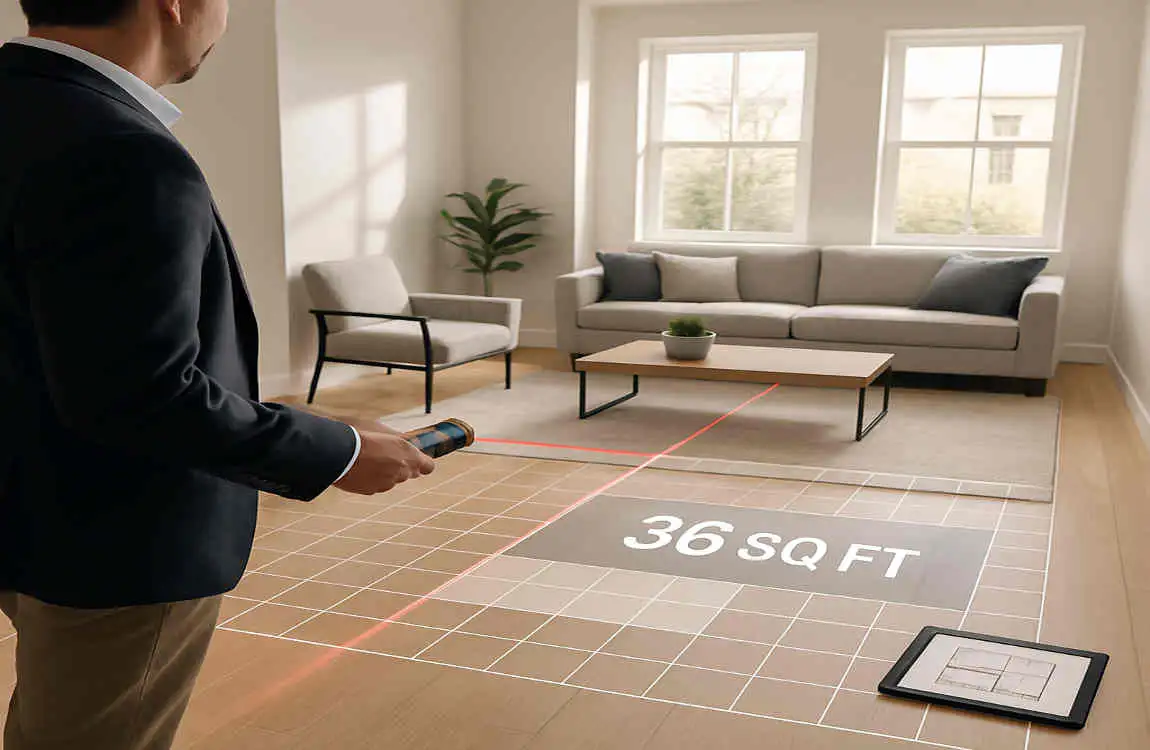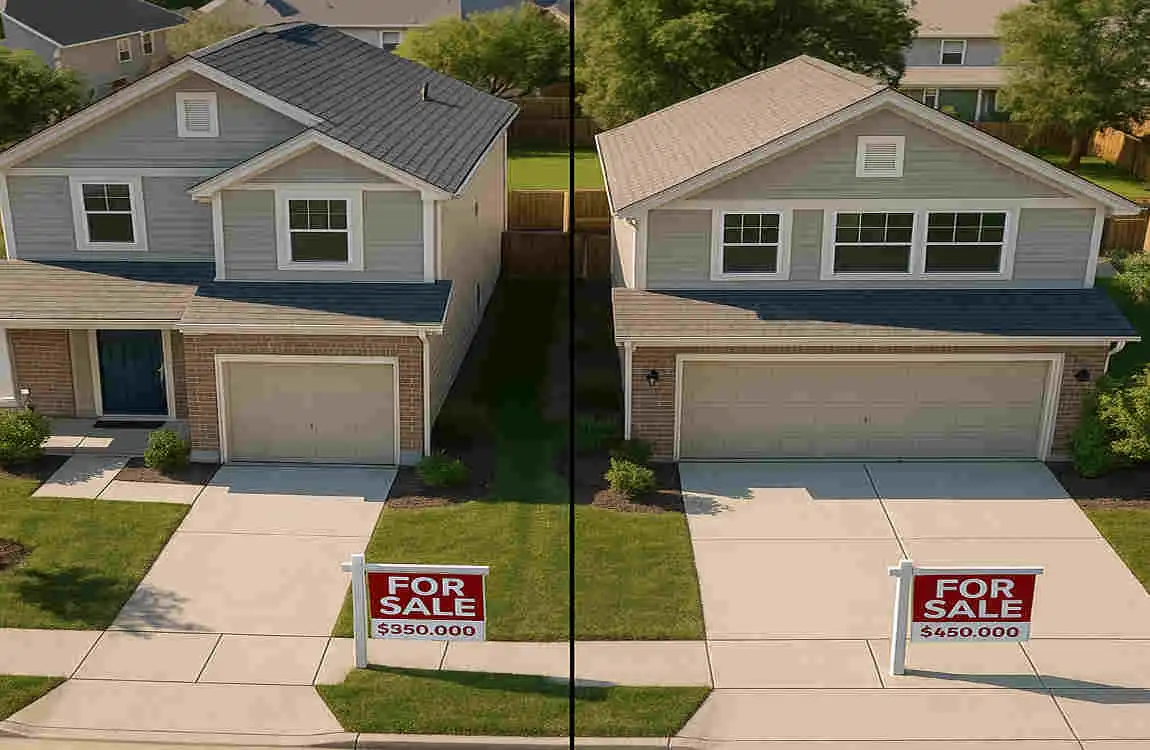Have you ever wondered if your garage is included in your home’s square footage? It’s a question that many homeowners, buyers, and real estate professionals have. Understanding the answer to this question is crucial because it can significantly impact your home’s valuation and its market listing.
What Is Square Footage in Real Estate?

Before we can answer whether a garage counts as square footage, let’s first define what square footage means in the context of real estate.
Defining Square Footage
Square footage refers to the total area of a property, measured in square feet. It’s a key metric used in home buying and selling because it provides buyers with an idea of the property’s size and potential. However, not all areas of a home are included in the official square footage calculation.
Living Area vs. Other Areas
In real estate, there’s a distinction between the living area and other types of areas. A living area, also known as a heated or conditioned space, typically includes rooms such as bedrooms, living rooms, kitchens, and bathrooms. These are the spaces that are heated or cooled and are considered part of the home’s usable living space.
On the other hand, areas such as garages, patios, and basements are typically excluded from the official square footage. These spaces are considered non-living areas and are treated differently in the valuation and listing process.
Finished vs. Unfinished Space
Another important concept to understand is the difference between finished and unfinished space. Finished space refers to areas that are fully completed and ready for use, with walls, flooring, and other finishes in place. Unfinished space, on the other hand, may lack these finishes and may require additional work to be usable.
When measuring square footage, only finished space is typically included in the official calculation. This means that if your garage is unfinished, it’s even less likely to be included in your home’s square footage.
Does a Garage Count as Square Footage?
Now that we have a better understanding of square footage and its components, let’s answer the main question: Does a garage count as square footage?
The Short Answer
Typically, garages do not count as part of the official square footage of a home. This is the case for most residential properties, regardless of whether the garage is attached or detached.
Why Garages Are Excluded
There are several reasons why garages are excluded from the official square footage calculation:
- Non-living space: Garages are considered non-living spaces, meaning they’re not intended for daily living activities such as sleeping, cooking, or relaxing.
- Not heated/cooled: Most garages are not heated or cooled, which sets them apart from the living areas of a home.
- Different durability and finishes: Garages often have different construction materials and finishes compared to the rest of the home, which can affect their value and functionality.
Different Types of Garages
It’s worth noting that different types of garages may be treated differently when it comes to square footage:
- Attached garages: These are garages that are physically connected to the main structure of the home. While they’re still typically excluded from the official square footage, they may be more closely tied to the home’s overall value.
- Detached garages: These are standalone structures separate from the main home. They’re even less likely to be included in the official square footage calculation.
- Converted garages: If a garage has been fully converted into a living space, complete with heating, cooling, and finishes, it may be eligible to be counted as part of the home’s square footage. However, this depends on local regulations and appraisal standards.
Industry Standards and Guidelines
When it comes to measuring square footage and determining what can be included, several key industry standards and guidelines are essential to be aware of.
ANSI Guidelines
The American National Standards Institute (ANSI) provides guidelines for measuring square footage in residential properties. According to ANSI, only heated and cooled living areas should be included in the official square footage calculation. This means that garages, along with other non-living spaces, are typically excluded.
Appraisal Industry Standards
Appraisal organizations, such as Fannie Mae and the Federal Housing Administration (FHA), also have standards for measuring square footage. These standards align with ANSI guidelines, emphasizing the importance of only including heated and cooled living areas in the official calculation.
Realtor and MLS Rules
Real estate agents and the Multiple Listing Service (MLS) have established rules and guidelines for listing properties and accurately describing their square footage. These rules often follow ANSI and appraisal industry standards, ensuring consistency and accuracy in the presentation of properties to buyers.
How Garages Are Treated in Home Valuations
While garages may not be included in the official square footage calculation, they can still significantly impact a home’s overall valuation.
Appraiser Treatment of Garages
During a property valuation, appraisers will consider the presence and quality of a garage house, even if it’s not counted in the square footage. They’ll assess factors like the garage’s size, functionality, and condition to determine its impact on the home’s overall value.
Impact on Home Value
The size and functionality of a garage can have a notable impact on a home’s value, even if it’s not included in the official square footage. For example:
- Car storage: A garage provides a convenient and secure place to store vehicles, which can be a major selling point for buyers.
- Workshop space: If a garage is set up as a workshop, it can add value by providing a dedicated space for hobbies or home projects.
- Storage room: A garage can serve as additional storage space, which is always a valuable asset for homeowners.
Depreciation and Appraisal Adjustments
Appraisers may also consider factors like depreciation and make adjustments to the home’s value based on the condition and functionality of the garage. For example, an older or poorly maintained garage can negatively impact the home’s overall value, whereas a newer or well-maintained garage can have a positive effect.
Does Garage Space Affect Your Listing Size?

When listing a property for sale, the official “listing square footage” generally excludes garages. However, real estate agents may still highlight the presence and features of a garage in the listing description.
Exclusion from Listing Square Footage
As we’ve discussed, garages are typically not included in the official square footage calculation. This means that when a property is listed for sale, the square footage listed will not include the garage area.
Describing Garages in Listings
Although excluded from the official square footage, real estate agents often describe the garage in the listing. Common descriptors include:
- “2-car garage”
- “Oversized garage”
- “Attached garage”
- “Detached garage”
These descriptions help buyers understand the presence and functionality of the garage, even if it’s not included in the official square footage.
Buyer Perception and Marketing Angles
The presence and quality of a garage can significantly influence buyer perception and serve as a valuable marketing angle when selling a home. For example, a house with a large, well-maintained garage may be more appealing to buyers who value vehicle storage or workshop space.
Sellers can highlight the benefits of their garage in the listing description, using language that emphasizes its size, functionality, and potential uses. However, it’s important to do so without inflating the official square footage or misrepresenting the property.
Strategic Advice for Sellers
If you’re selling a home with a garage, here are some strategic tips to keep in mind:
- Highlight the garage’s benefits: Use the listing description to emphasize its size, functionality, and potential uses.
- Use photos and videos: Include high-quality photos and videos of the garage in the listing to showcase its features and condition.
- Be transparent about square footage: Clearly state that the garage is not included in the official square footage to avoid any confusion or misrepresentation.
- Consider staging the garage: If the garage is used as a workshop or storage space, consider staging it to showcase its potential and appeal to buyers.
Exceptions and Special Cases
While garages are typically excluded from the official square footage calculation, there are some exceptions and special cases to be aware of.
Converted Garages
If a garage has been fully converted into a living space, complete with heating, cooling, and finishes, it may be eligible to be included in the home’s square footage. However, this depends on local regulations and appraisal standards.
To qualify as a living space, the converted garage must meet certain criteria, such as:
- Having a permanent heating and cooling system
- Being fully finished with walls, flooring, and other finishes
- Meeting local building codes and regulations
If these criteria are met, the converted garage may be included in the official square footage calculation, potentially increasing the home’s overall value.
Legal and Code Requirements
In some cases, local building codes and regulations may require that certain types of garages be included in the official calculation of square footage. For example, if a garage is attached to the main home and has a shared wall, it may be considered part of the overall structure and included in the square footage.
Homeowners and sellers need to be aware of these local requirements and work with qualified professionals to ensure compliance and accurate representation of the property.
Regional Variations and Market Practices
Square footage calculation and treatment of garages can vary by region and local market practices. In some areas, garages may be more commonly included in the official square footage, while in others, they may be strictly excluded.
Homeowners and sellers must understand the specific practices and standards in their local market and work with experienced real estate professionals to ensure accurate and compliant representation of their property.
Bonus Rooms and Attached Storage Areas
In some cases, bonus rooms or attached storage areas above or adjacent to a garage may be eligible to be included in the official square footage calculation. These spaces must meet certain criteria, such as being fully finished and heated/cooled, to qualify as living space.
Suppose you have a bonus room or an attached storage area. In that case, it’s essential to consult with an appraiser or real estate professional to determine whether it can be included in the official square footage and how it may affect the home’s overall value.
How to Measure and Document Your Garage and Home for Accuracy
To ensure accuracy and compliance with industry standards, it’s essential to accurately measure and document the square footage of your garage and home.
Best Practices for Measuring Square Footage
When measuring square footage, follow these best practices:
- Use a reliable measuring tool: Use a laser measure or tape measure to ensure accuracy.
- Measure to the nearest inch: Round measurements to the nearest inch for consistency.
- Include only heated and cooled living areas: Follow ANSI and appraisal industry standards by only measuring heated and cooled living spaces.
- Document measurements clearly: Keep a record of all measurements and calculations for reference and transparency.
Measuring Garage Space Separately
When measuring your home’s square footage, it’s important to measure the garage space separately and document it clearly. This will help avoid any confusion or misrepresentation when listing the property for sale.
To measure your garage accurately:
- Measure the length and width: Use a reliable measuring tool to measure the length and width of the garage, rounding to the nearest inch.
- Calculate the area: Multiply the length by the width to calculate the garage’s area in square feet.
- Document the measurements: Keep a record of the garage’s measurements and area, separate from the main home’s square footage.
Tools and Tips for Homeowners
If you’re a homeowner looking to accurately measure and document your home’s square footage, here are some tools and tips to consider:
- Laser measure: Invest in a reliable laser measure for accurate and easy measurements.
- Floor plan software: Use floor plan software to create a digital representation of your home and garage, with accurate measurements and calculations.
- Hire a professional: If you’re unsure about measuring and documenting your home’s square footage, consider hiring a professional appraiser or real estate agent to assist you.
- Keep records: Keep a record of all measurements and calculations, along with any relevant documentation or photos, for reference and transparency.
Impact of Garage Inclusion on Home Value and Buyer Decisions
While garages may not be included in the official square footage calculation, they can still have a significant impact on a home’s overall value and buyer decisions.
Influence on Desirability and Marketability
The presence and quality of a garage can greatly influence a home’s desirability and marketability. Buyers often value the convenience and security of a garage for vehicle storage, as well as the potential for additional storage or workshop space.
In competitive markets, a home with a well-maintained and functional garage may stand out from the competition and attract more interest from buyers.
Financial Impact on Buyers’ Willingness to Pay
The presence of a garage can also impact buyers’ willingness to pay for a home. Buyers may pay a premium for a house with a garage, especially if they value the additional space and functionality it provides.
In some cases, the presence of a garage is a deciding factor for buyers, influencing their decision to make an offer on a particular property.
Garage as a Differentiator
In a crowded real estate market, a garage can serve as a key differentiator for a home. By highlighting the presence and features of the garage in the listing, sellers can set their property apart from others and attract the attention of buyers who value this amenity.
To leverage the garage as a differentiator, sellers should:
- Use high-quality photos and videos to showcase the garage’s size, condition, and potential uses through compelling visual content.
- Emphasize the benefits: Highlight the convenience, security, and versatility of the garage in the listing description.
- Stage the space: If the garage is used as a workshop or storage area, consider staging it to showcase its potential and appeal to buyers.

